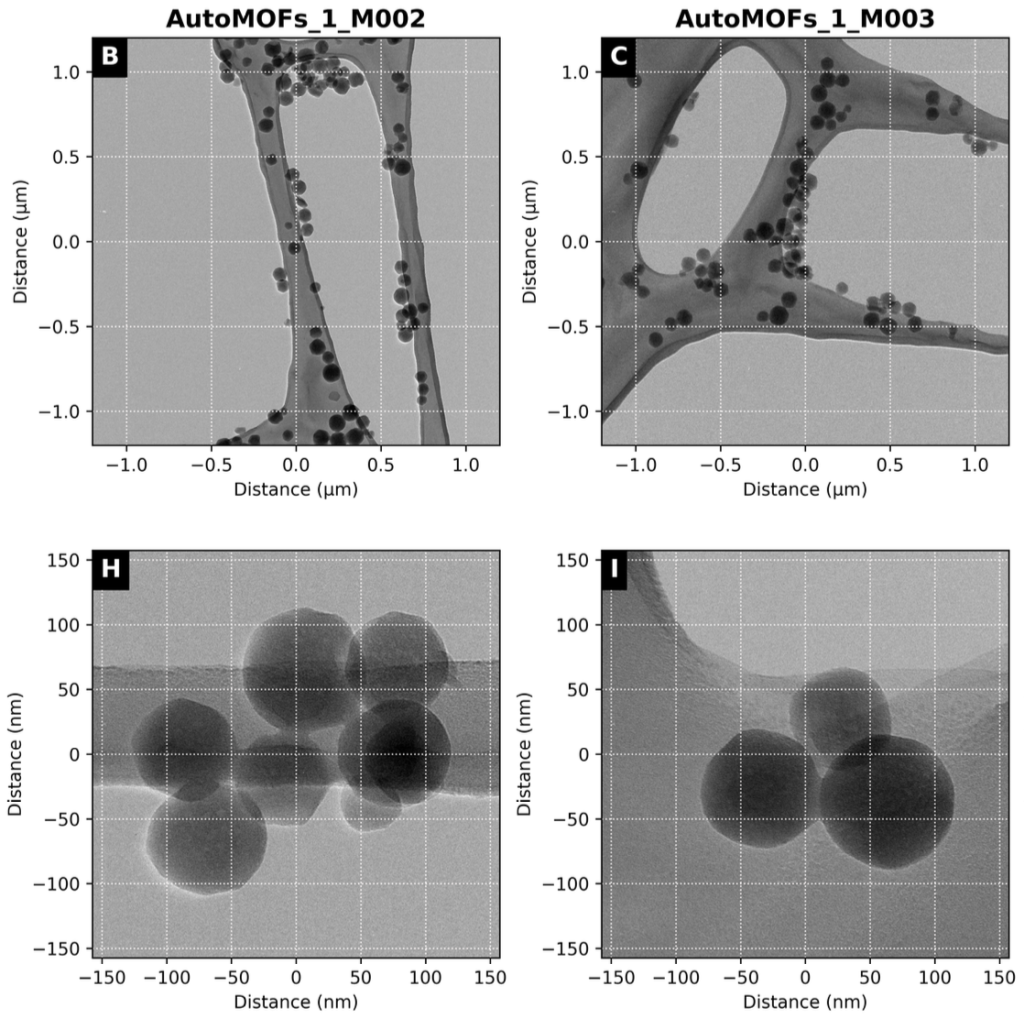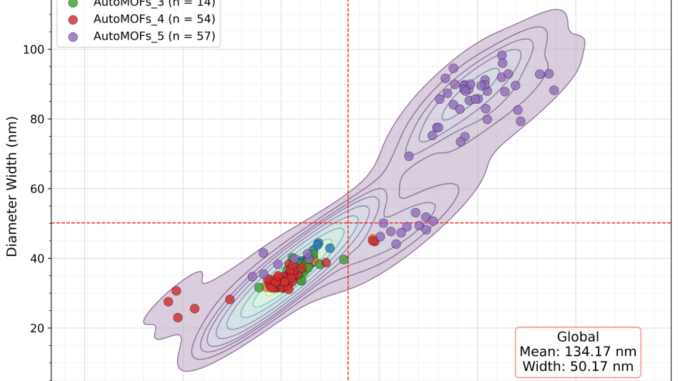
It’s been a long time coming, but we finally have the first manuscript on the automated MOF syntheses available online on ChemRxiv here. In this large collaborative effort, we go into detail on the set-up of the system, the organisation of the data and metadata, and the initial results from the first 150-odd syntheses (the first five batches).
Here’s some highlights of what we found:
Firstly, we take care of the boring but important stuff, so after discussion of the set-up and (meta-)data management details, and we look at repeatability of reactions over several months, which is stable within a few percent (Figures 1 and 2). The results highlight that we can make particles on demand with exactly the same size and size distribution as the previous one. This is only possible due to tight control of all reaction parameters, and very detailed documentation of the actual synthesis steps.
It’s worth noting that all syntheses details, measurements and analyses are publicly available in Zenodo here. Organising this has been another near-herculean effort, but we think it is worth it for true FAIR+Trustworthy science.
Then we move on to more interesting correlations: looking at the influence of stirring parameters such as stirrer shape and speed on the yield, mean particle size, and size distribution width. All of these stirring parameters do have a measurable influence on the final morphology and yield, so make sure to keep your stirrer bars identical, as well as speeds.
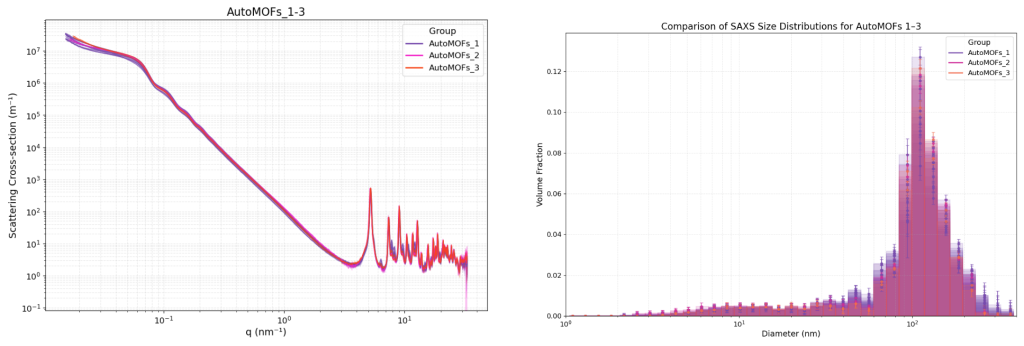
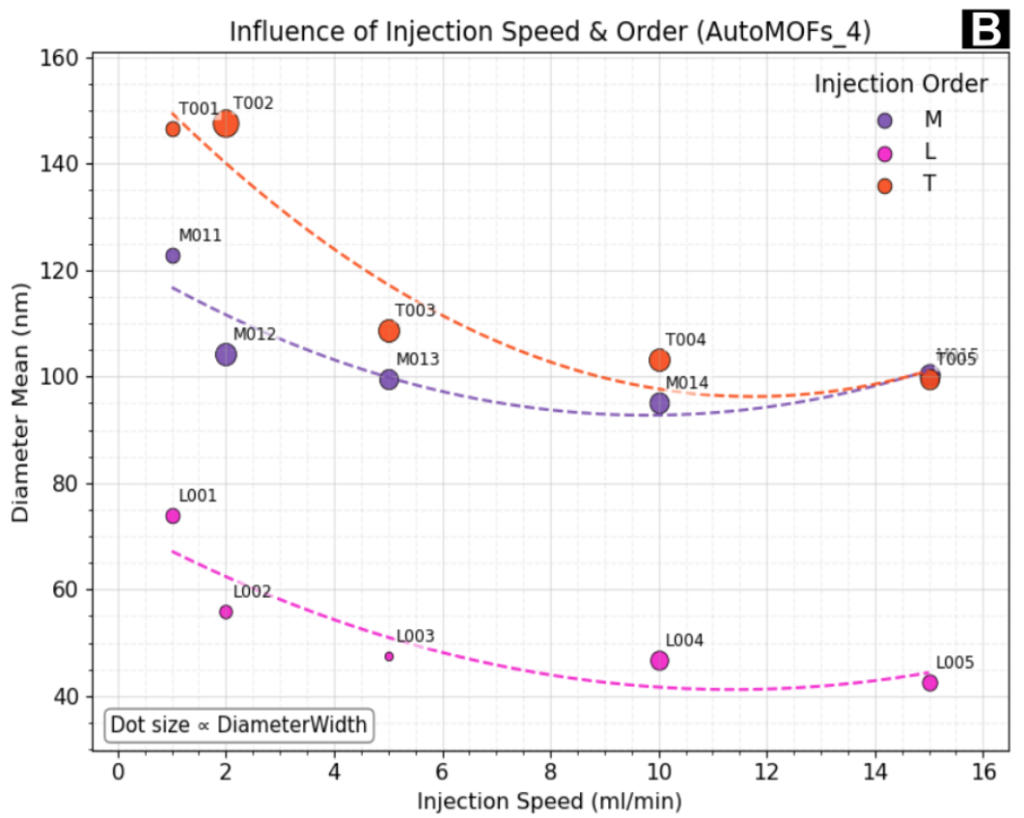
A second major outcome is the influence of injection sequence and injection speed. These have a very large influence on the final morphological parameters (Figure 3), and so, if you want reproducible MOF syntheses, we highly recommend using a syringe injector and sticking religiously to identical injection orders.
In conclusion, as highlighted in the paper, “[these series] illustrate the sensitivity of ZIF-8 formation to mixing history and reaction kinetics, where seemingly minor procedural choices such as order of addition, injection speed and stirring, can shift the balance between nucleation and growth, yielding particles that differ by orders of magnitude in size”. To illustrate what dimensions we can reach just by changing synthesis parameters, check out Figure 4.
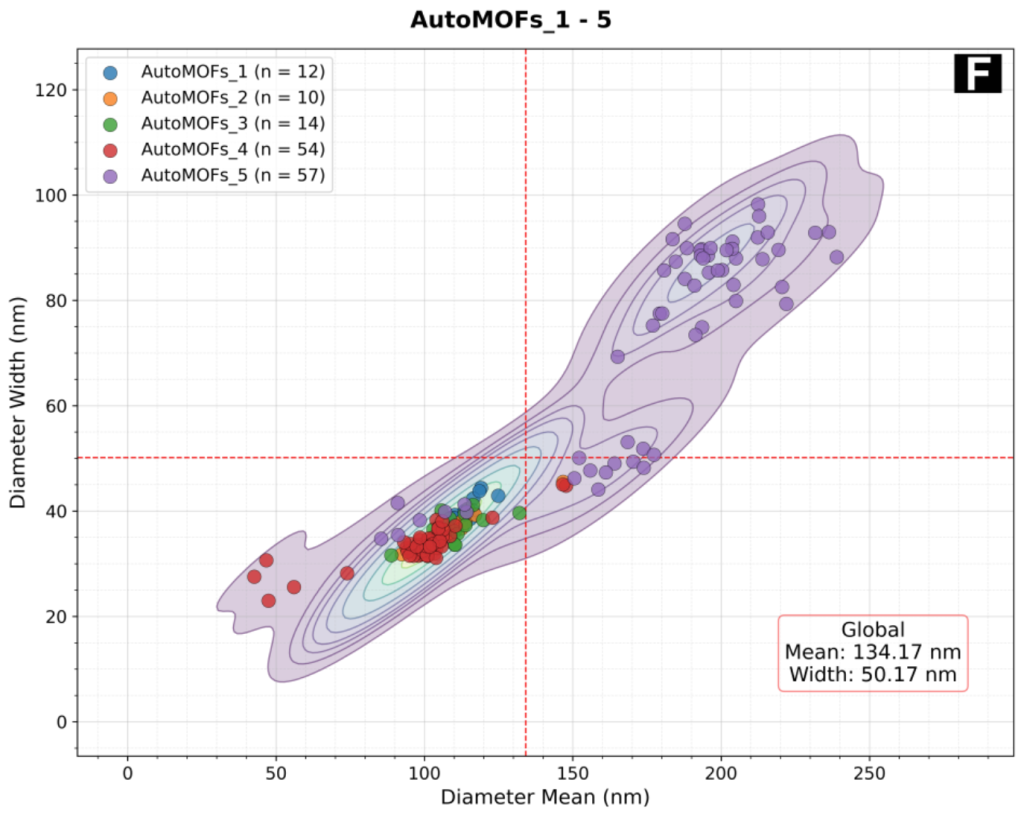
For more details, do please check out the paper, it condenses years of work into several pages, with some excellent graphics to boot, thanks to Glen Smales’ relentless efforts. The SI is also worth a look, as it contains every synthesis of every sample in detail, and many, many more extra pieces of information obtained over the duration of the experiment. We’re hoping that this paper will be received well. If so, we’ll be encouraged to try and condense the information from the remaining 1000 samples into a couple more insights.

